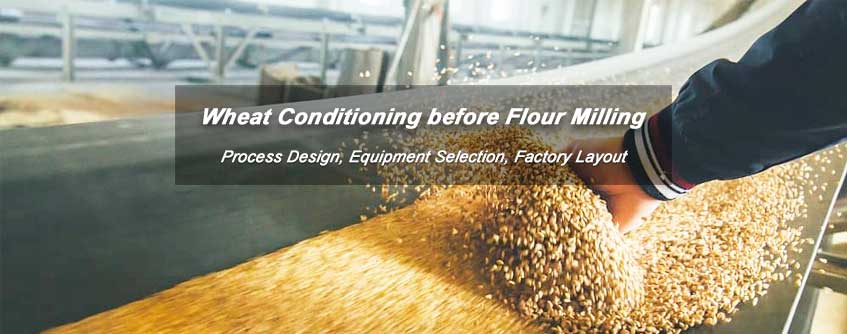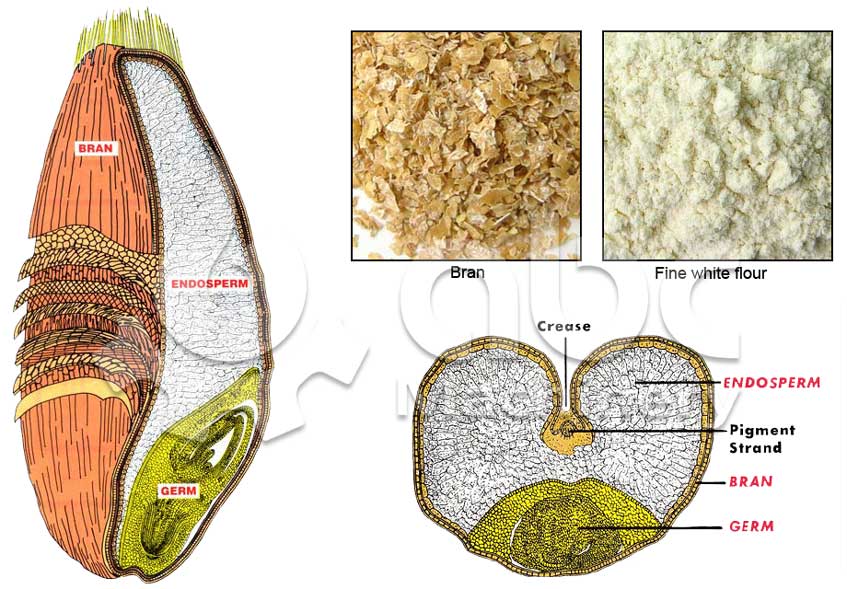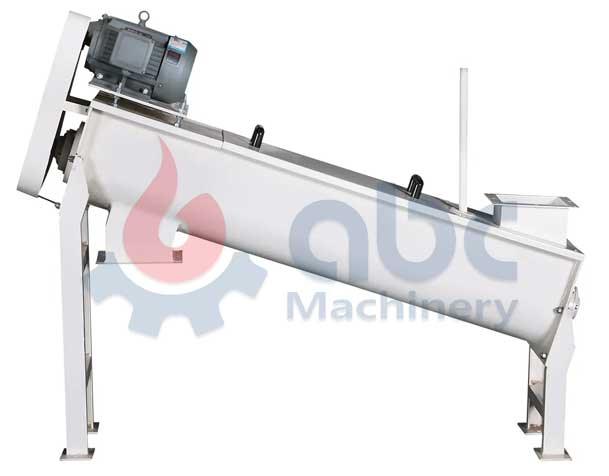Professional millers know that the cleaning process of wheat is important for wheat flour milling. One of the key steps is the wheat moisture conditioning process before milling. The process of improving wheat flour extraction and flour quality through hydrothermal treatment is called wheat conditioning and tempering.
Click to see the complete wheat flour processing process step by step>>

Precise Wheat Moisture Conditioning to Improve Milling Performance
Different wheat processing processes require different types, quality and moisture of wheat. If you have already considered the wheat raw material, ABC Machinery's professional staff will customize and design the wheat processing process for you according to your raw material. Our company also provides FREE Sample Testing Service, you can send your wheat samples to us by mail. (Related Post: How to Set up A Flour Mill in Pakistan>>)
Wheat dampening process requires that the hull and endosperm be both easily separated and that the endosperm be easily broken.
The wheat moisture conditioning process adds water to the wheat, or warm water (if the weather is cold), until the added water penetrates the wheat kernel and optimal moisture distribution is achieved, to improve the physical, biochemical, and processing properties of the wheat for optimal flour milling process.
After dampening, the mechanical damage resistance of the wheat skin increases, which is conducive to maintaining the integrity of the wheat bran flakes in the flour production process, and is conducive to improving the quality of flour.
Due to the wheat endosperm protein and starch water absorption capacity and water absorption speed is different, so that the endosperm structure loose, easy to grind into flour, is conducive to reducing power consumption.

Due to the wheat husk, paste powder layer and endosperm in the water-absorbing process of water-absorbing sequence and rate is different, resulting in their expansion coefficient after absorbing water is also different. This small displacement facilitates the stripping of the endosperm from the wheat husk.
Inside the wheat pile, the moisture of each wheat grain is uniformly distributed, and there is a certain distribution of moisture in each part of the wheat grain. The wheat to be milled requires a moisture uniformity of 0.2% or less.
From the above results, it can be seen that after the wheat moisture conditioning, the performance of the milling process is improved, which can correspondingly improve the flour yield and the quality of the finished product, and reduce the power consumption.
The wheat moisture conditioning process consists of two main steps.
The three main factors that affect the dampening process are: water quantity, temperature and time. The following table shows the ideal moisture and tempering period for wheats of different types.
| Type of Wheat | Ideal Moisture (%) | Dampening Time (hours) |
|---|---|---|
| Vary Hard | 16.5 - 17.5% | 36-48 |
| Hard | 16.0 – 17 % | 24-36 |
| Semi Hard | 15.5 - 16.0% | 18-24 |
| Soft | 14.5 - 15.0% | 6-12 |
When the moisture content of wheat exceeds optimal levels, it will be difficult to separate the wheat bran and endosperm during milling and screening due to increased cohesion and stickiness of the bran and endosperm.
If wheat moisture is below optimal levels, both the bran and endosperm of the wheat become brittle, resulting in more flour but lower quality.
Under optimal wheat moisture conditions, wheat bran forms larger particles like flakes during wheat grinding process, which makes the wheat bran easier to remove during the screening process.
First, it is necessary to ensure that the moisture of each wheat grain in the wheat pile is evenly distributed.
Second, there is a certain distribution ratio of moisture in each part of the wheat kernel: cortex moisture > endosperm moisture > wheat moisture.
Generally, it is hoped that the ratio of cortex moisture to endosperm moisture is 1.5:1~2.0:1. The optimal grinding moisture of hard wheat is 15.5%~17.5%, and the optimal grinding moisture of soft wheat is 14.0%~15.0%.
If the conditioning time is too short, the endosperm will not be completely soft, the endosperm structure will be uneven, and the rolling distance will not be easily adjusted during wheat grinding, resulting in incomplete milling and difficulty in sieving.
If the wheat moistening time is too long, the water in the wheat skin will evaporate, making the wheat skin dry and easily broken, affecting the milling performance.
In actual production, a large amount of wheat is wetted with water, and the moistening time needs to be longer, usually 18 to 24 hours. Hard wheat or 24 to 30 hours in winter, soft wheat or 16 to 24 hours in summer.
The process and technology of wheat moisture conditioning and tempering requires a tool to realize it: the wheat moisture conditioning equipment – dampening machine/dampener.
Wheat dampening equipment to meet the two basic functions: is to add water in the wheat, and make the water and wheat mix evenly; the second is to control the amount of water, so that it reaches the moisture content requirements. Add water, mixing is generally completed in the dampener, while the rate of water added to be added by controlling the water inlet valve to achieve.
The most commonly used watering equipment at present is dampening mixer, intensive dampening machine, automizing dampener, and automatic dampening machine.
Wheat intensive dampener is a new type of equipment for wheat moisture conditioning.
The main working mechanism of the powerful water filling machine is a sealed cylinder and a high-speed rotating plate impeller placed inside the cylinder. After the wheat and water enter the cylinder, they are continuously struck by the beating plate, and the wheat is thrown along the working cylinder to form a ring-shaped "material flow". In such an environment, each grain of wheat can be subjected to multiple strong impacts and frictions, causing the skin to soften and partially tear.

ABC Machinery's intensive dampener has the characteristics of large and uniform watering volume and stable dampening effect. If you want to buy wheat conditioning equipment or other wheat flour mill machines, contact us to get a GREAT quote!